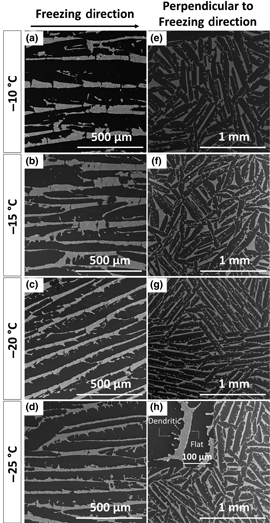Article contents
Ice-templated silicon foams with aligned lamellar channels
Published online by Cambridge University Press: 08 November 2017
Abstract

An aqueous suspension of 5 vol% silicon (Si) nanoparticles was directionally solidified at substrate temperatures between −10 and −25 °C, resulting in colonies of aligned pure ice dendrites separated by interdendritic Si particles packed walls. Channels are created by sublimation of the dendrites, and the surrounding Si walls are densified by sintering. The resulting Si foams exhibit a 76 ± 2% macroporosity, with the width of the ice-templated channels and the Si walls decreasing with solidification temperature, from 106 to 60 µm and from 34 to 17 µm, respectively. Si walls show high surface roughness from inverse templating of short secondary ice dendrite arms.
- Type
- Research Letters
- Information
- Copyright
- Copyright © Materials Research Society 2017
References
- 5
- Cited by



